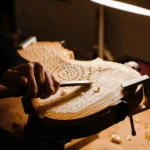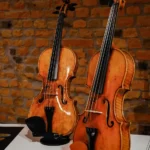Top 6 Classical Concertos Ever Written
Back to BlogClassical music touches our souls and moves us, music in general. Many musicians can ensure that feeling while playing their music, just like the listeners can feel when they watch live performances, not to mention the effect it has on the entire community. These factors are what make art so special. There is also research to prove it.
Classical Concerts have a great impact, which is one reason some of them are so remarkable.
The concertos are part of the most important genres in the classical music. Many composers worked in this genre and wrote some masterpieces. How about meeting some of the greatest classical concertos ever written?
Haydn Trumpet Concerto
Haydn’s Trumpet Concerto is one of the sunniest compositions in the orchestra’s repertoire. Written in 1796, it was intended for his friend Anton Weidinger, a virtuoso performer and instrument maker who developed a keyed trumpet that could play chromatically across its entire range – a precursor to the modern valved version.
The concerto’s three movements share the liveliness, lyricism, and brilliance one would expect of Haydn; his trumpet shining with a tone at its disposal, giving the performer a chance to show off both the songful and brilliant qualities of the instrument.
Beethoven – Piano Concerto No. 5 in E flat (‘Emperor’)
As its title suggests, the Emperor Concerto towers above the rest of Beethoven’s piano concertos and the rest of the repertoire. Those who attempt it must contend not only with the notes themselves but with their own perceptions of those notes in music history.
Brahms – Violin Concerto in D
The romantic composer Johannes Brahms wrote his Violin Concerto in 1878. He considered it to be as serious as Beethoven’s Violin Concerto and dedicated it to the violinist Joseph Joachim, who ranked both alongside each other. A common refrain among violinists, it is difficult to master—but audiences still love it.
Elgar – Cello Concerto in E minor
One of Elgar’s last compositions, this towering and emotional work has taken on a life of its own since cellist Jacqueline du Pré commandeered it. Cellists have to consider her story and Elgar’s story when they pick up the bow for this monster piece.
Shostakovich – Cello Concerto No. 1 in E flat
Though not always the most tuneful, Shostakovich’s Cello Concerto No. 1 will repay you far more than you give it. The melodies are buried deep within innovative layers of sound, waiting to be unearthed and hummed, but Shostakovich asks a lot of the listener. Perhaps that’s why this is one of his most enduring works—the conversation is never really over.
Mendelssohn Violin Concerto
The concerto, which premiered in Leipzig on March 13, 1845, was written by Mendelssohn with violinist Ferdinand David in mind. The men had been good friends since they were teenagers. Although Mendelssohn had first mentioned writing a violin concerto in 1838, it was not completed until 1844. On the day of the premiere, David was the soloist; however, Mendelssohn was ill and unable to conduct his new work. His assistant conductor and composer, Niels Gade, led the orchestra instead.
The first movement, “Allegro molto appassionato,” is written in classic sonata form and has several thematic expositions. Rather than providing a final ending to the movement after the “Coda” (the part of a piece that comes after the main body of music), Mendelssohn has a single bassoon play a sustained tone as a bridge to the overall restful mood of the second movement.
For some people, playing the violin is a way to relax after a difficult day and seek joy. For others, it is a serious hobby or passion. In addition, for violinists, the violin can be a tool to express feeling and emotion through art and music—both of which are connected to our emotions. It’s human nature to put out anything we cannot find the words to say.
Our artistic expressions are shaped by our experiences, which can be a source of meaning in our lives. When you play an instrument, you can communicate with your audience through music. That is how you receive the energy from a concerto and the author’s message.









